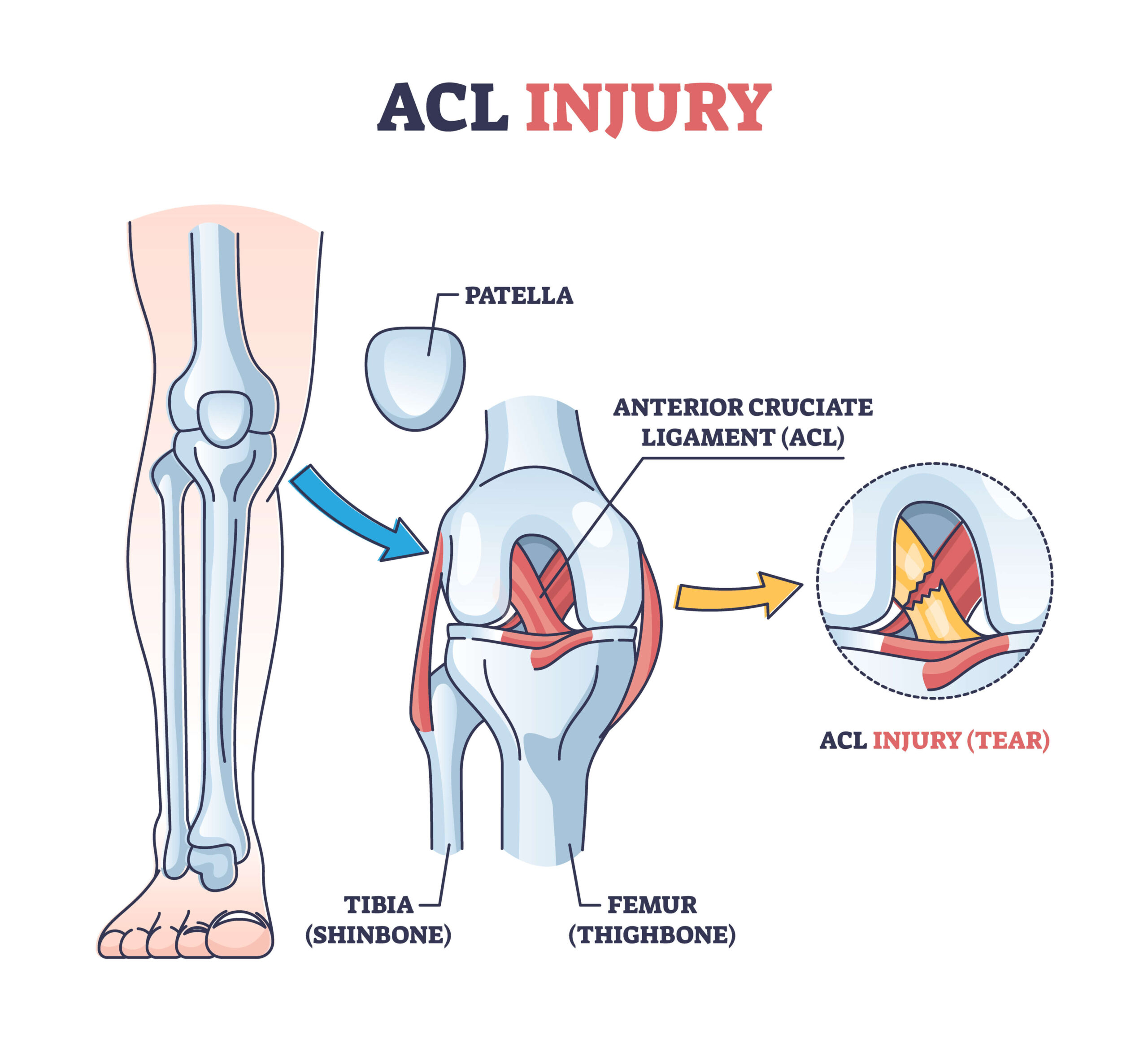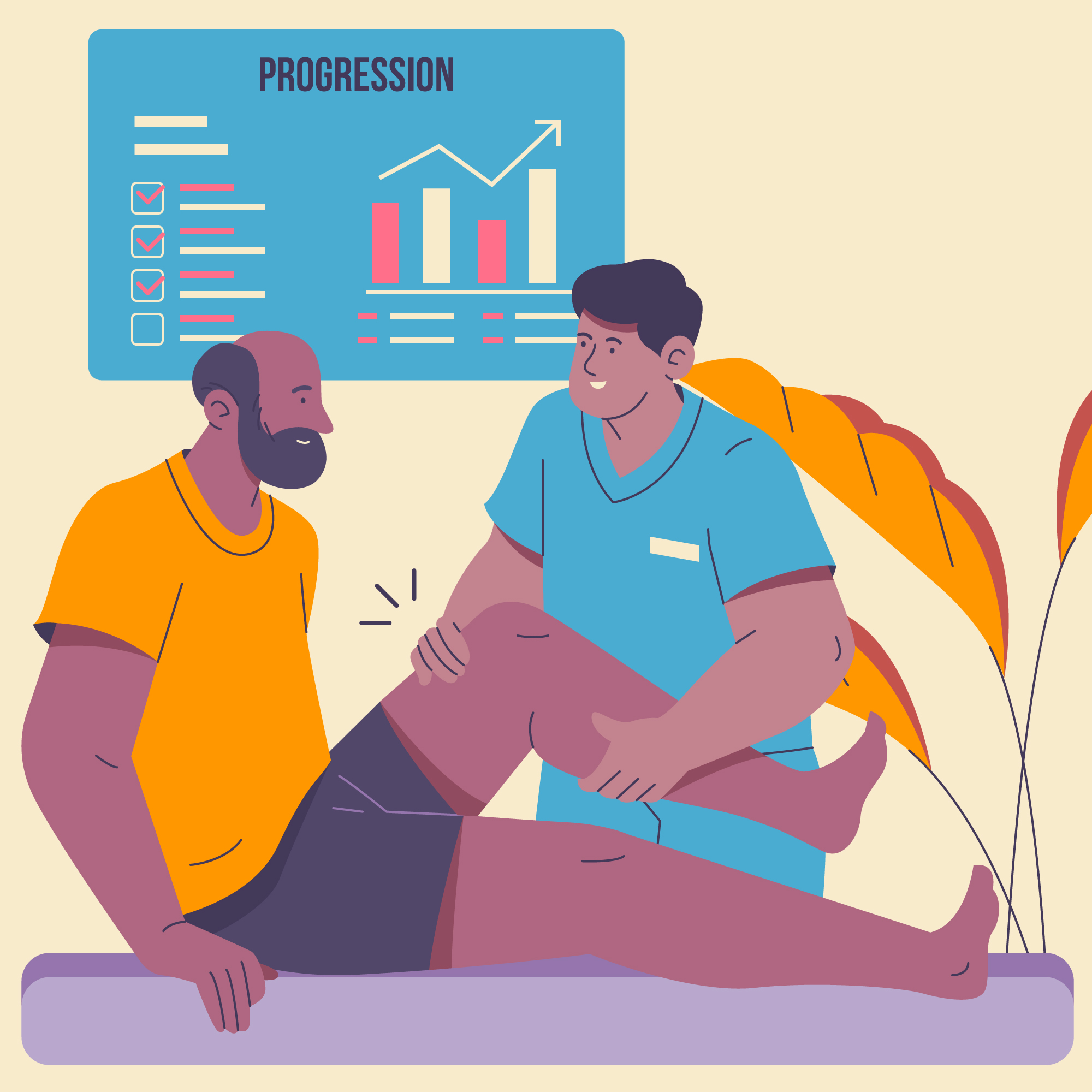The anterior cruciate ligament (ACL) is a crucial component of the knee joint, providing stability and facilitating movement. ACL injuries are common, especially in sports that involve sudden stops, jumps, and changes in direction, such as soccer, basketball, and skiing. Given the prevalence of ACL injuries, athletes and coaches often seek effective prevention strategies. One common approach is stretching. This article examines whether stretching can prevent ACL injuries, exploring the role of flexibility, the mechanisms of ACL injuries, and effective injury prevention strategies.
Understanding the ACL
The ACL is one of four primary ligaments in the knee, connecting the femur (thigh bone) to the tibia (shin bone). Its primary functions include:
- Stability: The ACL helps stabilize the knee during movement, particularly in activities involving sudden stops and direction changes.
- Mobility: It allows for a full range of motion in the knee joint, enabling smooth and coordinated movements.
When the ACL is injured, it can lead to significant pain, swelling, and instability in the knee, often requiring surgical intervention and rehabilitation for recovery.
The Prevalence of ACL Injuries
ACL injuries are common in athletes, with an estimated 200,000 cases occurring annually in the United States alone. These injuries can result from:
- Non-contact mechanisms: Sudden changes in direction or speed, landings from jumps, and awkward pivots.
- Contact mechanisms: Direct impacts to the knee, often seen in contact sports.
Women are at a higher risk for ACL injuries than men, possibly due to differences in anatomy, hormone levels, and biomechanics.
The Role of Stretching in Injury Prevention
Flexibility and Injury Risk
Flexibility refers to the range of motion in a joint or group of joints and is an essential component of overall athletic performance. Many believe that increased flexibility through stretching can help prevent injuries, including ACL injuries. The rationale is that stretching:
- Increases muscle elasticity: This may reduce the risk of strains and sprains.
- Improves joint range of motion: Greater flexibility in the muscles and tendons surrounding the knee may contribute to better overall knee stability.
Types of Stretching
There are two main types of stretching that athletes often utilize:
- Static Stretching: This involves holding a stretch for a prolonged period, typically 15 to 60 seconds. Static stretching is effective for improving flexibility but may not adequately prepare the muscles for explosive movements.
- Dynamic Stretching: This involves controlled movements that gently take muscles and joints through their full range of motion. Dynamic stretching is often recommended as part of a warm-up routine, as it mimics the movements that will be performed in sports.
The Effectiveness of Stretching in Preventing ACL Injuries
Research Evidence
Several studies have examined the role of stretching in preventing ACL injuries. The findings suggest that while stretching may improve flexibility, its direct impact on reducing ACL injuries is not as clear-cut.
- Limited Evidence: A review published in the “Journal of Athletic Training” found that there is insufficient evidence to definitively state that stretching alone prevents ACL injuries. While flexibility is essential, other factors play a more significant role in injury prevention.
- Dynamic Warm-Ups: Research indicates that incorporating dynamic stretching and warm-up routines that mimic sport-specific movements is more effective than static stretching alone in reducing injury risk.
Other Factors in ACL Injury Prevention
While flexibility is important, other factors contribute to ACL injury risk. Effective prevention strategies should consider a comprehensive approach that includes:
- Strength Training: Strengthening the muscles around the knee, particularly the quadriceps and hamstrings, can provide better support and stability to the joint. A well-rounded strength training program can help reduce the likelihood of ACL injuries.
- Neuromuscular Training: Training that focuses on improving balance, coordination, and proprioception (awareness of body position) can significantly reduce the risk of ACL injuries. Programs that incorporate plyometrics and agility drills can enhance an athlete’s ability to control their movements during dynamic activities.
- Proper Technique: Teaching athletes proper landing and cutting techniques can reduce the strain on the ACL. For example, encouraging athletes to land with a wider stance and slightly bent knees can decrease the risk of injury during jumps.
- Fatigue Management: Fatigue can impair an athlete’s performance and increase injury risk. Ensuring athletes are adequately conditioned and manage their fatigue levels during practice and competition is crucial for prevention.
- Seasonal Training and Conditioning: Athletes should maintain their conditioning throughout the year, not just during the competitive season. Consistent training can help keep muscles strong and prepared for the demands of the sport.
Developing a Comprehensive Injury Prevention Program
To effectively prevent ACL injuries, coaches and athletes should adopt a comprehensive approach that includes:
1. Warm-Up Routine
Incorporate a dynamic warm-up routine before practices and games that includes:
- Dynamic stretches: Movements such as high knees, butt kicks, and leg swings that prepare the muscles for activity.
- Sport-specific drills: Incorporate drills that mimic the actions of the sport to enhance coordination and readiness.
2. Strength and Conditioning
Implement a strength training program focusing on:
- Quadriceps and Hamstrings: Target exercises such as squats, lunges, and leg curls to strengthen these critical muscle groups.
- Core Strength: Include exercises that enhance core stability, which supports the overall function of the lower extremities.
3. Neuromuscular Training
Integrate neuromuscular training programs that focus on:
- Plyometric exercises: Such as box jumps and lateral hops to enhance power and control.
- Balance and agility drills: Use tools like balance boards and cones to improve stability and coordination.
4. Education and Awareness
Educate athletes about the importance of injury prevention strategies, including:
- Understanding risks: Discuss the common causes and risk factors for ACL injuries.
- Promoting self-awareness: Encourage athletes to listen to their bodies and recognize signs of fatigue or discomfort.
5. Regular Assessments
Conduct regular assessments of athletes to identify any muscular imbalances or weaknesses. Tailor training programs to address individual needs and enhance overall performance.
Conclusion
While stretching is an essential component of overall fitness and flexibility, its role in preventing ACL injuries is limited when considered in isolation. A comprehensive approach that includes dynamic warm-ups, strength training, neuromuscular training, proper technique, fatigue management, and education is crucial for effective injury prevention.
By adopting these strategies, athletes can significantly reduce their risk of ACL injuries, allowing them to perform at their best while enjoying the sports they love. Remember, injury prevention is an ongoing process that requires commitment and awareness, and athletes should work closely with coaches and trainers to develop individualized programs that address their specific needs.





